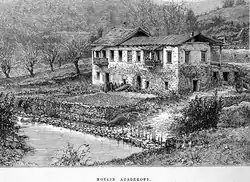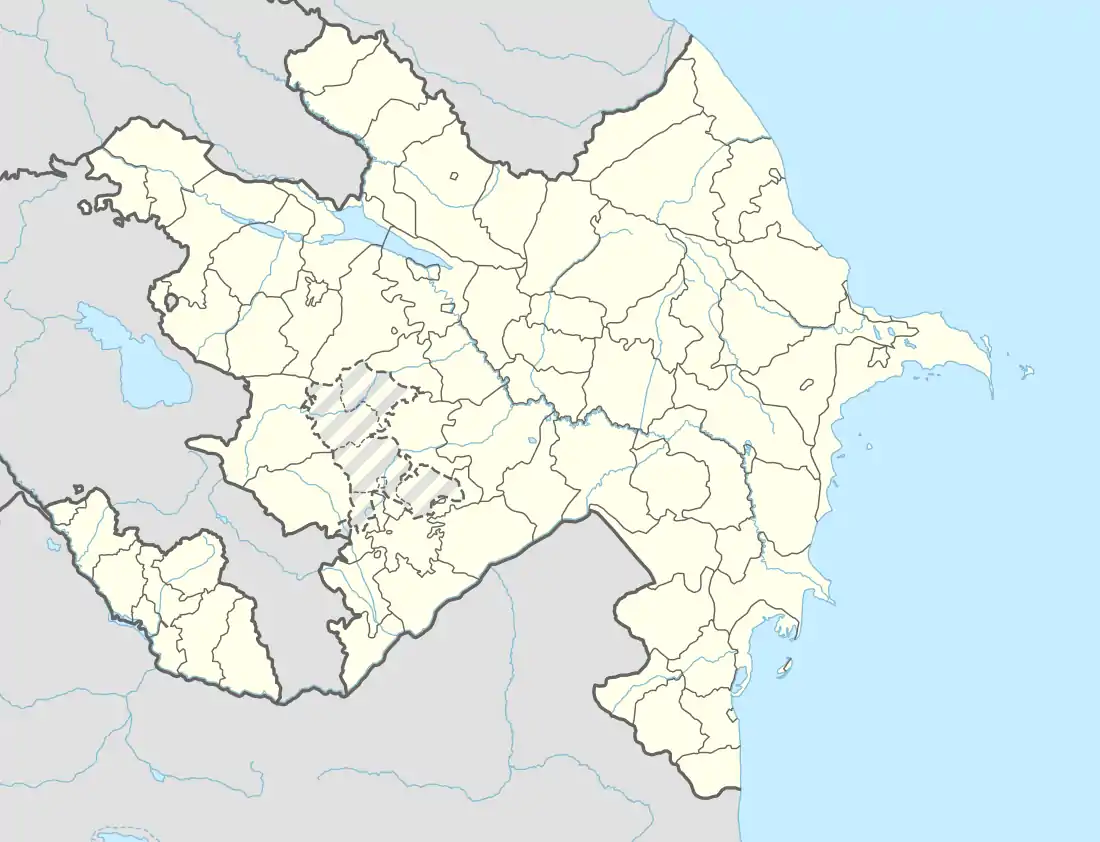Kusapat
Kusapat (Armenian: Կուսապատ; Azerbaijani: Qasapet) is a village de jure in the Tartar District of Azerbaijan, de facto in the Martakert Province of the self-proclaimed Republic of Artsakh. The village has an ethnic Armenian-majority population as well as a Greek minority. The village also had an Armenian majority in 1989.[2]
Kusapat
Կուսապատ | |
|---|---|
| Qasapet | |
 One of the 11 mills of the Atabekians in Kusapat | |
 Kusapat  Kusapat | |
| Coordinates: AZ 40°10′36″N 46°43′51″E | |
| Country | |
| District | Tartar (de jure) |
| Province | Martakert (de facto) |
| Elevation | 776 m (2,546 ft) |
| Population (2005[1]) | |
| • Total | 276 |
| Time zone | UTC+4 (UTC) |
History
Kusapat, one of the oldest villages of Nagorno-Karabakh, was founded in the 15th century by Armenian Prince Atabek Hasan-Jalalyan (1411), the fifth son of Prince Jalal III of the Hasan Jalalyan dynasty. Being the youngest son, Atabek inherited his father's fiefdom Tziranakar fortress that was on the outskirts of ancestral domains, and the older son of Jalalyan inherited Vank fortress (today Gandzasar monastery). From the old fortress village got its name of Kisapat, that in local Armenian dialect means "half of the wall".[3]
By Prince Atabek of Jraberd started the Atabekyans line and Kusapat with seven surrounding villages became the ancestral domain of their princely house. At the end of the 18th and beginning of the 19th century in Kusapat lived the famous Melik-Vani Atabekyan, who was one of the leaders of the Artsakh Armenians and did a lot for the establishment of Russian rule in Karabakh after the Russo-Persian War (1804–13).[3]
Kusapat was badly damaged during the First Nagorno-Karabakh War. On 7 July 1992 the village was captured and destroyed by the Azerbaijani army. On 16 July 1992, it was recaptured by Artsakh.
References
- Population of the Nagorno-Karabakh Republic (2005)
- Андрей Зубов. "Андрей Зубов. Карабах: Мир и Война". drugoivzgliad.com.
- "1892 Publication Recounts History of 15th Century Armenian Village in Artsakh". August 7, 2015.

.svg.png.webp)